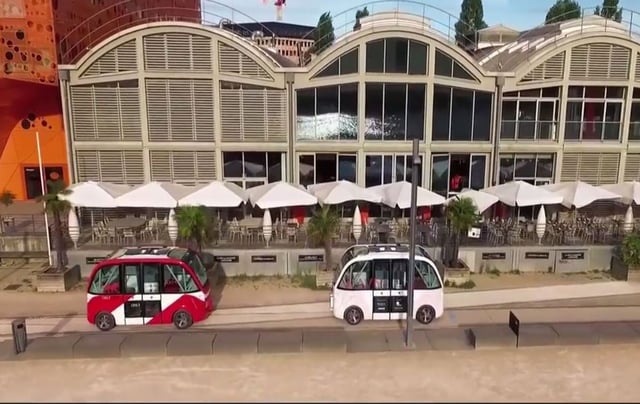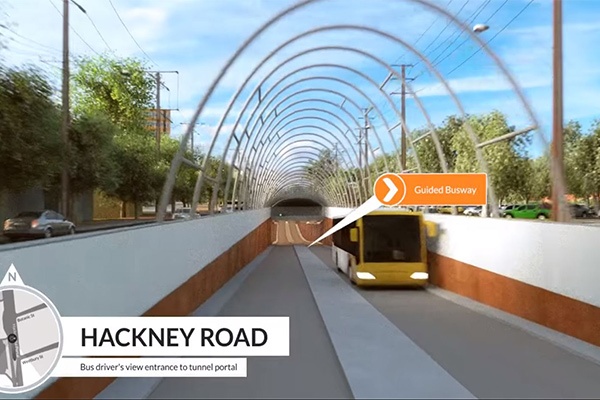SAGE's ITS technologies to ‘drive’ autonomous car future
Published: September 25, 2017 - Updated: September 25, 2017
Tonsley Innovation Precinct is set to become the hub for intelligent transport technologies that will change the face of transport as we know it – and SAGE Automation will play a key role.
The company, who specialise in intelligent transport systems (ITS), relocated to the Tonsley Innovation Precinct in September 2017, joining other institutions who are trialling autonomous vehicles there.
Trials are taking place to test autonomous vehicles in real-world environments, with help from the State Government’s $10 million Future Mobility Lab Funds announced last November – SAGE Automation is set to support the projects with its ITS capabilities.
In one project, the world’s first driverless cargo pods will be developed to transport goods on site at Tonsley – proving applications for the delivery and supply chain sectors.
Meanwhile Flinders University and RAA’s driverless shuttle project will transport students (followed by public) across the university’s large campus. Future plans involve an app that will allow people arriving at the nearby public transport hubs to arrange pick up and drop off to the campus.

An illustration of driverless shuttles in action. Credit: Tonsley Innnovation Precinct
SAGE bridging the technology gap
Emerging technologies are the key to enabling our driverless car future, but they pose a challenge for how to integrate them into our roads.
“The technology has evolved to a point where it can be deployed but road authorities face challenges with interfacing these technologies into existing systems and infrastructure,” SAGE Automation’s ITS Project Manager Damian Hewitt said.
“SAGE plays a key role in integrating the new technology into existing systems.”
“The next frontier is vehicle to vehicle and vehicle to infrastructure connectivity. An example of these would be the virtual variable messages sent via the AddInsight app to motorists.”
AddInsight is set to change the road user experience. It’s an intelligent road system developed by the South Australian Department of Transport (DPTI) that monitors real-time road traffic using Bluetooth sensor technology.
SAGE Automation has manufactured and installed Bluetooth capture stations in nearly all Australian states and territories, and is set produce the components required for the nation-wide uptake of the technology.
‘Connective technologies’ like this connect and collect data on road assets to dramatically reduce congestion and safety on roads.
For example, the Department of Transport, Planning and Infrastructure’s O-Bahn City Access Project has incorporated a number of ITS technologies to communicate to the tunnel’s control systems and provide benefits to bus services, for example:
- Vehicle to vehicle communication: On-board hardware installed in all O-Bahn buses gives bus drivers real-time alerts when they are travelling too close or too fast to the bus in front. This system can communicate with other equipped buses up to 300 metres away – reducing the chance of collision.
- Vehicle to infrastructure communication: Road-side sensors at either end of the tunnel detect which vehicles are authorised to use the tunnel and communicate with traffic lights at the O-Bahn tunnel’s entry. When buses queue too far back, detector loops trigger green signals to allow buses through the adjacent intersection, reducing congestion for other motorists in the intersection.
- Unauthorised vehicle detection: Road-side sensors detect every vehicle approaching the O-Bahn tunnel. Only buses with the on-board hardware installed will be allowed to enter the O-Bahn tunnel.

An illustration of the O-Bahn's Guided Busway. Image: Department of Planning, Transport and Infrastructure
SAGE will install and integrate the ‘tunnel’ sensors as well as delivering the other ITS and Operation Management and Control Systems (OMSC) and Plant Management and Control Systems (PMCS).
Mr Hewitt said such technological advancements are the key to solving our road congestion.
“There is an appetite from road authorities to change their model from delivering expensive road projects and instead turning to innovative technology that can actually solve congestion issues,” he said.
“The opportunity now is in harnessing and integrating this technology into our current systems to reduce the road footprint. This is where we’re seeing the biggest benefits to end users.”
Next step for driverless future
So far applications of autonomous vehicles are largely limited to university campuses and airport trials like those at Tonsley but its closer than we think. It’s been reported that by 2025 ‘mostly self-driving cars’ (where drivers still have the ability to ‘take back control’ if needed) will be a reality and all public transport could be autonomous.
The National Transport Commission in 2017 published the first Guidelines for trials of automated vehicles in Australia. The report said the potential benefits of this technology as are vast with: “improved road safety outcomes, increased mobility for an ageing population and people with a disability, as well as productivity and environmental efficiencies”.
Meanwhile traditional car makers are reportedly winning the race against Silicon Valley to produce autonomous vehicles.
Read more: How SAGE is delivering the latest ITS technologies for road authorities.





